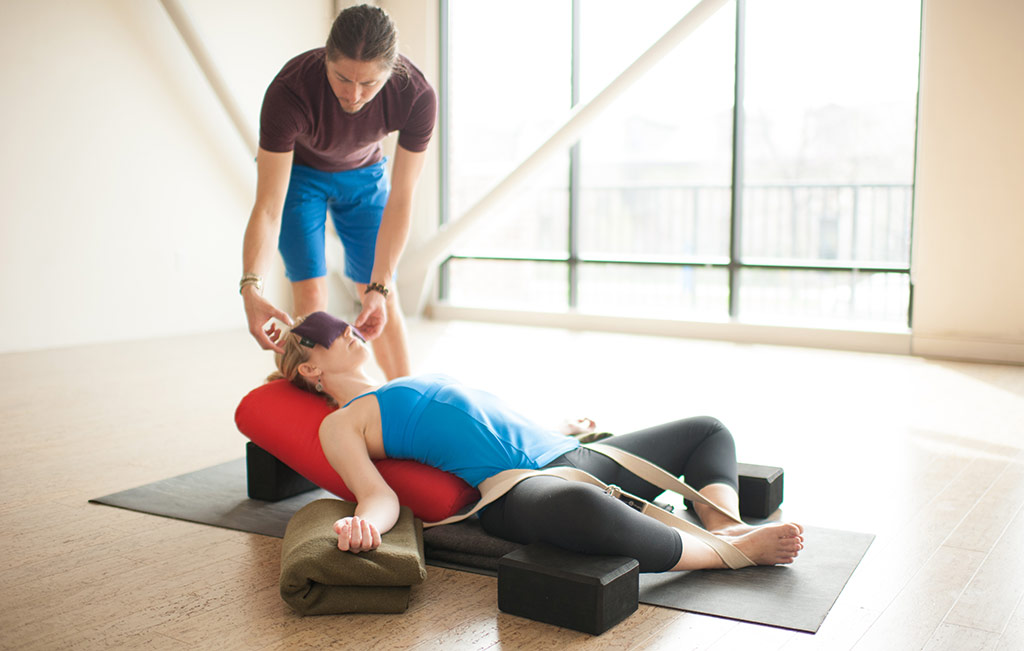
Last week, I wrote about ways to ease your transition into fall. In the post, I suggested traditional grounding poses such as balancing poses and standing poses. In addition, I recommended nervous system-calming restorative yoga.
Restorative yoga is not about stretching. It’s about easing into a supported position so that your body can release tension and agitation. It’s about creating the conditions that allow your body to open naturally and to shift from the sympathetic (fight-or-flight) to the parasympathetic (rest-and-digest) nervous system.
We in the West seem to consider the idea of setting aside time to relax as being non-productive and therefore, not worth doing. I beg to differ. We all need time to recharge. Practicing one restorative pose can take as little as five minutes.
You can easily mix and match the restorative poses below. If you only have time for one pose, just practice one of them. Feel free to spend as much or as little time as you have in each pose. Go to the links for detailed instructions.
All three poses work best with a Standard Bolster. Make sure to have a nonskid yoga mat, a couple yoga blocks and a yoga blanket or two handy as well.
3 Relaxing Restorative Poses for the Transition to Fall
- Supported Twist: There aren’t a lot of opportunities for us to rotate our spines as we move through our daily life. This restorative twist can help mobilize our spines and promote relaxation at the same time. I like the fact that this is a downward-facing twist. For me, the prone position seems to draw my attention more inward. I also love that tight hamstrings don’t pose any restrictions to your spinal movement in this twist.
- Supported Matsyasana (Fish Pose): I consider this pose to be the counterpose to the rest of your life. We spend so much time bending over keyboards, desks, countertops, etc., that our upper chest and neck can become chronically contracted. This pose attempts to undo that habit. I often teach this with two blocks lined up, one in front of the other. But using a Standard Bolster makes this experience a bit softer and more relaxed. Sometimes the edge of a block against your spine can feel a little harsh. Your body can melt more easily into the soft surface of a bolster.
- Supported Supta Baddha Konasana (Supine Bound Angle Pose): I can’t say enough about how much I love this pose. It’s the ultimate grounding restorative pose. It has a neutral effect on your spine, so it’s easy for anyone to practice. It’s my students’ hands-down favorite of all restorative poses. That said, there are some people who feel better with more support under their knees than just a single, rolled blanket. Feel free to wedge a couple blankets, blocks or throw pillows under your thighs if your knees or inner thighs are uncomfortable in this pose.
